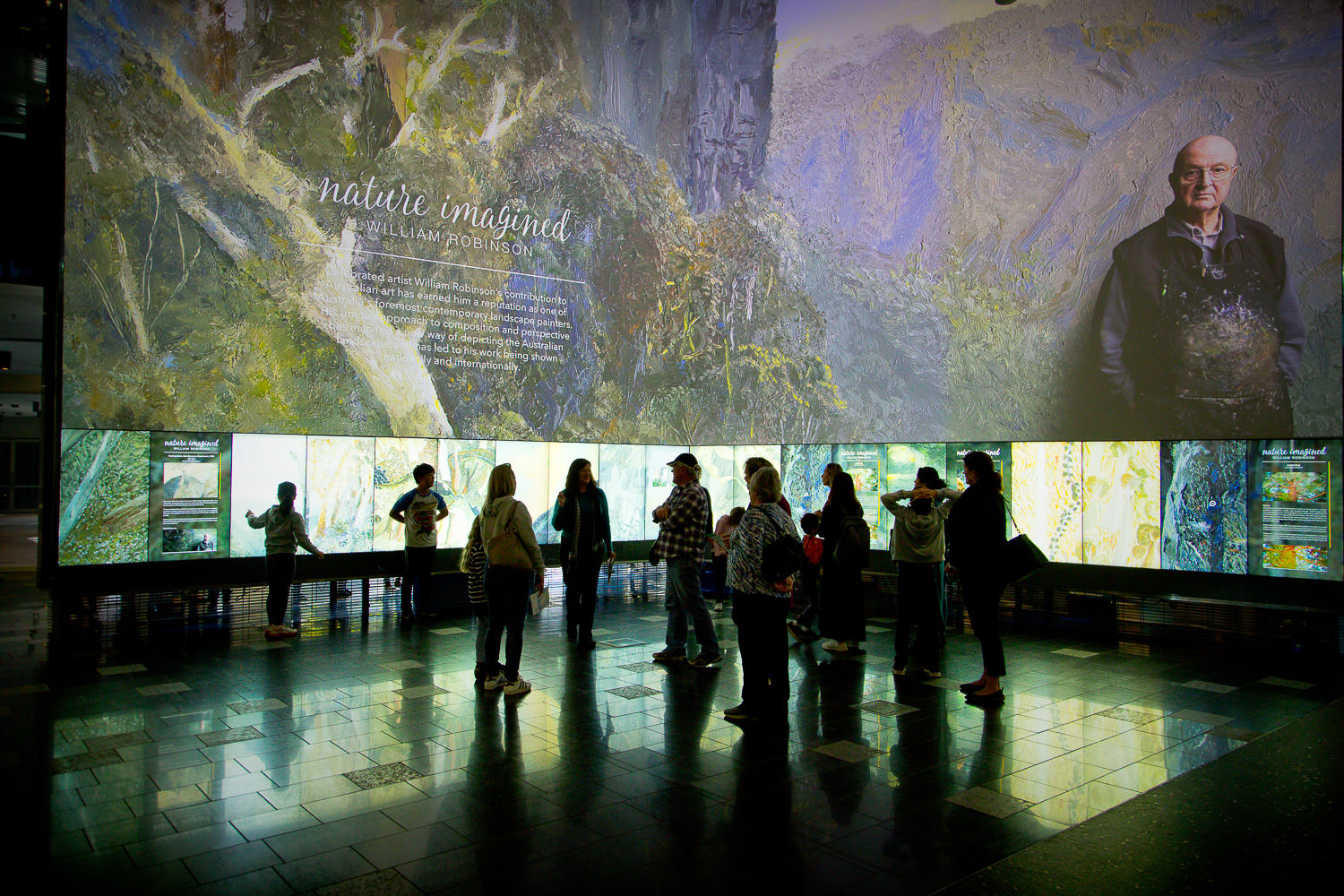The Cube‘s Nature imagined project displays three of William Robinson‘s captivating landscape paintings, digitised for the first time at high resolution. Visitors can zoom in on each of the artworks to see intricate detail and discover fascinating facts about the painted landscapes.
This project brings together the interaction of classic visual art and science, providing an opportunity to learn about the flora and fauna of the Springbrook area that William Robinson paints and gain insights into the artist’s techniques.
We checked in with developers at The Cube to find out what it takes to bring a massive project like this together and what aspects were the most exciting to create.

The Cube’s Nature Imagined allows visitors to interact with the works. They can learn about the flora and fauna of the Springbrook area and gain insights into the artist’s techniques. What process was used to collect this detailed information?
We travelled to Springbrook multiple times to photograph and film the plants and animals that inspired William Robinson to paint the area. We worked closely with experts here at QUT to ensure all the information was accurate, we are lucky to be surrounded by incredibly knowledgeable educators which is a big help when working on projects like Nature imagined.
We primarily filmed the video clips that are used in Nature imagined information panels. These clips are specially edited to appear endless, we used the latest video editing techniques to give the illusion of perpetual motion wherever possible to try and illustrate the constant, moving beauty of nature.

This project is an interesting change for The Cube as previous projects have been based on science. How have you adapted The Cube’s technology to showcase a project of fine art paintings?
We have had to write special software to enable The Cube to display such high-resolution images. This software has enabled us to generate very smooth movement of these large images, and what we have managed to achieve is incredible considering how much data is being moved around. New code to handle the image zooming and scrolling was created as we wanted to match the public expectations of smooth interaction experienced on our smartphones and tablets.
Working on a project like Nature imagined has been a nice break from the hard science we usually deal with such as robotics or the periodic table. We created an ambient soundtrack of birds and running water that plays in The Cube when the project is running, we have had that soundtrack playing in The Cube Studio for a few weeks now, it is very relaxing!
You mention the team developed new software to enable The Cube to display high-resolution images. Can you tell us about this new software and existing software, Unity 3D? How do these software packages complement each other?
We use the game development software Unity 3D to create all of our projects. It’s fantastic for most applications, although we are pushing the limits with William Robinson’s super high-resolution paintings.
Some of the challenges during the development of Nature imagined were ensuring the first touch and subsequent manipulation of the paintings felt natural. We also had to master seamlessly looping the videos we shot while on location in Springbrook, to give the illusion of perpetual motion, they are quite hypnotic!

Can you explain some of the challenges in developing a project like Nature imagined? And how were these problems different to recent projects like Code-A-Bot?
Our approach to any project is similar; we design from a user’s perspective. The team will define what a visitor would like to learn or how someone new to The Cube may experience the project, then break down that experience into smaller parts that we can work on.
Nature imagined contains a lot more information than Code-A-Bot, our previous project. It is always challenging to manage research and expertise from QUT stakeholders and Nature imagined was no exception. Our subject matter experts ensured we had enough information – sometimes too much! This information had to be entered into the project and proof read – quite a task! A big paper trail but it is safe to say the research is all in and it gives Nature imagined depth and longevity.

In what other ways can visitors understand and interpret the ideas in Nature imagined?
The Cube’s Winter holiday program (7-14 July 2018) features a wide variety of drop-in and bookable activities to delve deeper into the themes of Nature imagined. As well as being able to interact with The Cube screens (Nature imagined, Dino Zoo, Retro Arcade) families can get hands-on with art and natural sciences.
Visitors can drop-in to Micro Macro and make drawings from flora and flora of the area and then add to an evolving collage. The digital scavenger hunt allows families to work together to look for insects and plants displayed at The Cube and follow missions over to the William Robinson Gallery, located within Old Government House. Families can meet QUT scientists working on real-world problems and explore a variety of rocks on display. Kids are encouraged to observe and interact – an important skill for aspiring artists or scientists.




Comments are closed.